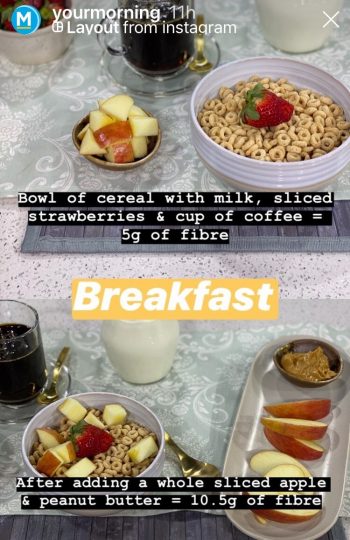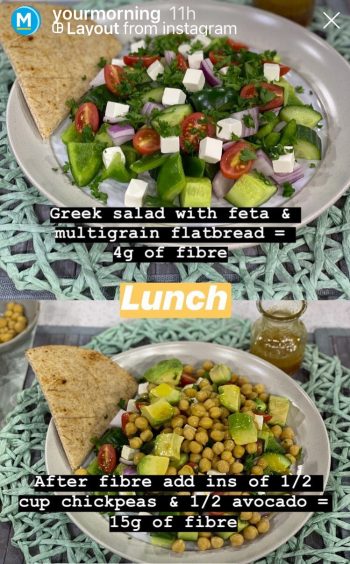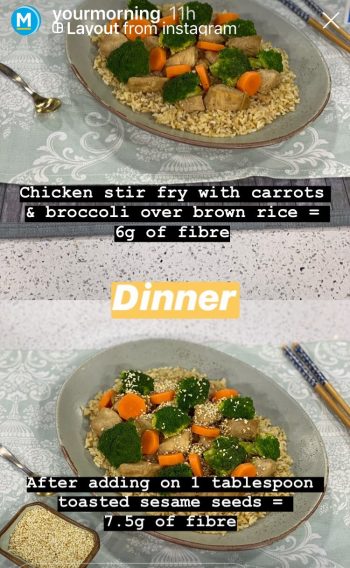
Helloooo Summer!
Who’s ready to fire up the BBQ and enjoy all the glorious seasonal produce? As an award-winning dietitian and daughter of a chef, I’m first in line for delicious, wholesome food – and yes, that includes dessert!
Here are my 4 tips for guilt-free summertime eating, with inspiring recipe ideas from my friends Nik and Carol over at Weekend at the Cottage!
1. Colour it up!
Think of fruits and veggies as Mother Nature’s superheroes – not only are they rich in vitamins and minerals, but they’re also filled with different disease-fighting plant-nutrients also called ‘phyto-nutrients’.
Tomatoes and watermelon for example, are packed with lycopene – it’s what gives these foods a red pigment. Lycopene may help lower your risk for heart disease and prostate cancer. Orange coloured produce such as carrots, cantaloupe, peaches and apricots contain carotenoids like beta-carotene to support your vision and reduces your risk for heart disease and some types of cancer.
Love blueberries? Me too! They contain a special plant nutrient called anthocyanins that are linked to healthy aging and brain health. And what about spinach, kale and Swiss chard? Well, all those leafy greens are packed with lutein, a special antioxidant that lowers your chances of developing age-related macular degeneration.
Dietitian Sue’s tip: At every meal, fill half your plate or bowl with colourful fruits and veggies. Salads are an easy way to get in those colours. Try this Tomato Avocado Salad or Chopped Kale Salad.
2. Pick your protein
What’s calling your name? Burgers, ribs, poultry, tofu, shrimp?
Pick a protein at every meal. Protein helps you feel alert and full for longer. As part of a meal, protein also slows down the digestion of carbohydrates. This gives you a slow, steady rise in blood sugar levels which is beneficial for anyone with prediabetes or diabetes.
Dietitian Sue’s Tip: Choose lean proteins more often. One of my family faves are Mediterranean Chicken Kebabs and you could swap out the chicken for pork or cubes of firm tofu. For a smart protein choice that’s packed with heart-healthy omega-3 fats, aim for two fish meals a week – like Nik’s Grilled Salmon Burgers and Barbecued Salmon.
3. Find the fibre
We need 25-38 grams of fibre a day. But guess what? Most of us are only getting half that amount. Soluble fibre, found in strawberries, oatmeal and apples play a role in keeping our blood cholesterol levels healthy. Insoluble fibre, found in beans, bran and broccoli, help to keep us regular.
Dietitian Sue’s Tip: If you’re filling half your plate or bowl with fruit and veggies, then you’re already off to a great start! Try Granola or a high fibre breakfast cereal that contains at least 4 grams of fibre per serving. Check out my TV interview ‘Simple Ways to Boost Your Fibre’ for easy ways to pump up the fibre in a day’s worth of meals.
4. Make room for dessert
I love dessert…as in, I eat dessert every night! For me, it’s really the best part of the meal! Sometimes, dessert is a bowl of fresh fruit salad or a few slices of ice cold watermelon. And sometimes, it’s Peach Cobbler or French vanilla ice cream on a waffle cone or a slice of gluten-free Chickpea Chocolate Cake. Whatever you choose for dessert, dig in and enjoy!
Dietitian Sue’s Tip: Let go of the ‘good food’ versus ‘bad food’ thinking. Give yourself permission to enjoy all foods in moderation without any guilt. Food is joy, and eating together with family / friends is always a celebration!
What recipes are you most excited to try? Let me know in the comments. Happy summer, everyone!








